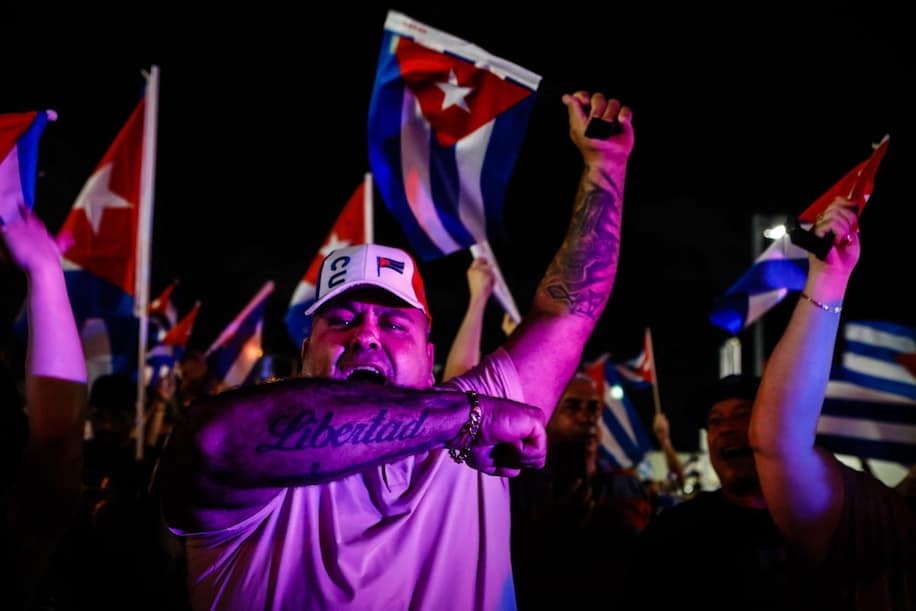Cuba’s protests mean the regime is weakening. They fill me with hope.

So it has filled me with hope to see the demonstrations in Cuba the past few days, which would have been unthinkable while I was an organizer there. That hundreds of people are publicly demanding reforms shows how the regime has weakened and the people sense a historic opportunity for change. You can hear it in their rallying cries: “Se acabó! Abajo el comunismo!” It is over, down with communism.
Much has been made about recent food shortages on the island and the lack of access to coronavirus vaccines. Certainly, that is fueling some of the current anger. But focusing on those factors ignores the longer arc of change in Cuba. Disillusionment has grown about the communist ideology, not only among Cubans of my generation, but also older Cubans who believed in the revolution 60 years ago.
[Old Cubans like my papi see hope for their homeland in young protesters]
The older generation sacrificed freedoms to achieve a communist utopia, but their efforts ended in misery. For instance, Cubans were promised a world-class health care system, but the result six decades later is dirty hospitals, a lack of medicine and a lack of doctors as Cuban doctors are sent abroad for the state’s profit and propaganda. Other big propaganda programs have also devolved into disaster, such as late dictator Fidel Castro’s touted literacy program. It might still woo the likes of Sen. Bernie Sanders (Vt.), a self-described democratic socialist, but it has become a decayed tool of indoctrination.
The most significant recent change is communication technology. Cellphone usage, the Internet and social media have enabled Cubans to network and communicate. During the last uprising in 1994, known as the Maleconazo, the regime easily isolated and cracked down on the demonstrations by cutting off the few phone landlines. That prevented most Cubans from learning about the demonstrations until after they were over. This time, footage from spontaneous demonstrations in two towns far away from each other were shared on social media, allowing the rest of the country to learn about them immediately.
In contrast with previous demonstrations — such as the Ladies in White (a collective of mothers and wives of political prisoners) and the San Isidro Movement (artists demanding freedom of expression) — these demonstrations have spread beyond their small enclaves and have been made up of tens of thousands of Cubans, despite harsh repression tactics including arbitrary arrests and disappearances.
[]
The technology has helped give rise to a robust civil society. Cubans have seen communities crop up around religion, LGBT issues, politics, entrepreneurship and even video games. These associations, harmless in a normal society where people freely pursue common interests, are considered a threat to the communists’ power in Cuba.
A growing social media movement of influencers is also challenging the Communist Party’s monopoly on public discourse. While the Cuba Communist Party’s flagship show, “Mesa Redonda,” has since 2009 had more than 4 million views and 32,000 subscribers on YouTube, the “Cubanos por el Mundos” channel, which provides independent news and entertainment, has racked up more than 38 million views and 142,000 subscribers since 2013. A popular YouTuber, Alex Otaola, who is mostly unknown outside of the Spanish-speaking Cuban and Cuban-American social media niche, has used his provocative commentary to push prominent Cuban artists and celebrities to echo his anti-communist message and persuade Cubans to peacefully fight for freedom on the streets.
Even if this uprising is crushed, I feel sure these events are the beginning of the end of communist rule in Cuba, because people realized they can demand their freedoms. Even if the regime is able to retain power, it will be forced to make economic reforms and possibly allow more political freedoms. Despite the strong repression, my contacts in Cuba are telling me people are still going to the demonstrations. They are afraid, but they believe this is the end of the dictatorship. They just want to have the support of the free world.
The United States can take a leadership role in supporting the demonstrations by applying further sanctions and other measures if the regime resorts to violence to repress the demonstrations. More immediately, the Biden administration should make clear to the Cuban regime that provoking an exodus, like the 1980 Mariel boatlift or the 1994 rafter crisis, will be considered a hostile action and dealt with by putting all options on the table, including military intervention.
Many Cuban Americans like me did not vote for President Biden, but we hope he rejects domestic radicals, including the democratic socialists, and fights against our foreign communist enemies. Biden has claimed he has “taken on the Castros and Putins of the world. I let them know: it stops here. It stops with me.” He also recently called communism a “failed system.” This is the time to act. The Biden administration’s message to the Cuban regime should echo the Cuban people’s “Se acabó!” It is over.
Yuri Pérez is manager of Latin American programs at the Victims of Communism Memorial Foundation.

